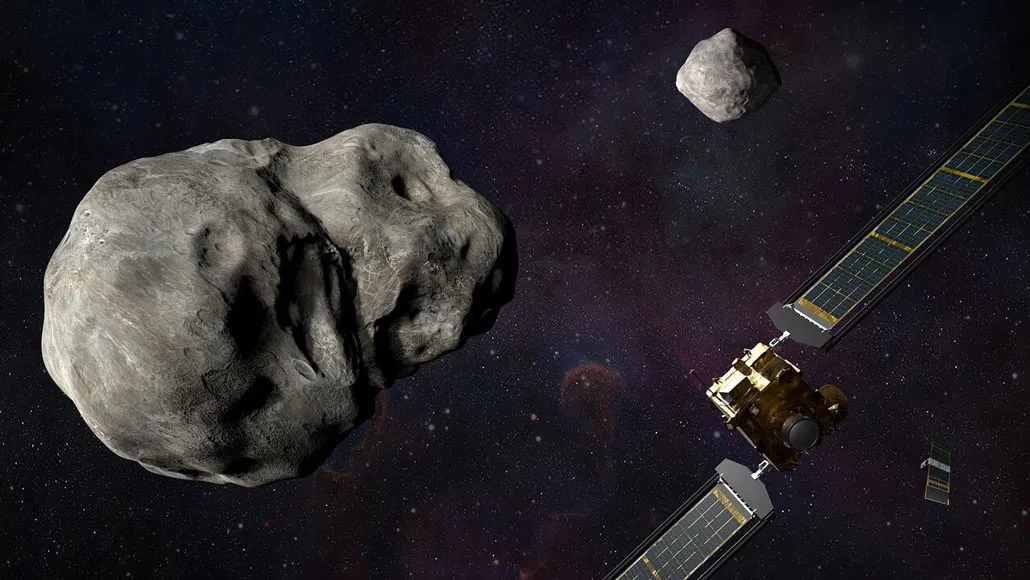An asteroid’s moon got a name so NASA can bump it off its course
This practice deflection is a test case to protect Earth

A moonlet asteroid newly named Dimorphos (left in this artist’s rendering) has been tapped as the target of NASA’s first asteroid deflection mission — which will involve sending a spacecraft headlong into the rock to change its trajectory through space.
NASA, Steve Gribben/Johns Hopkins APL